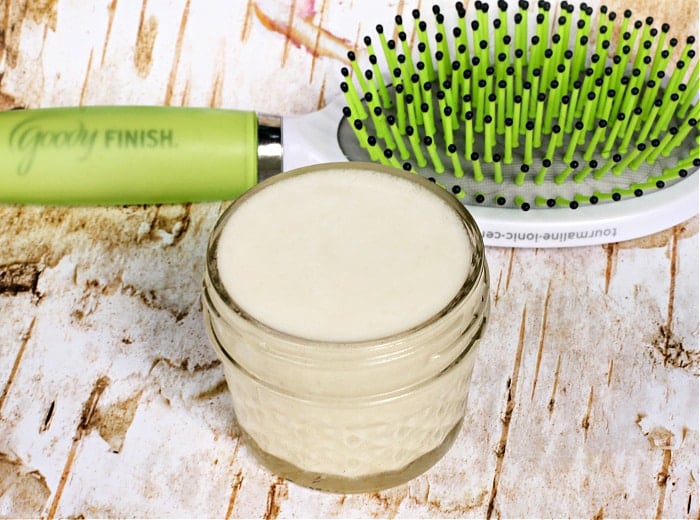Want luxurious, envy-worthy locks? Great news! With this homemade conditioner for natural hair, you’re just 4 ingredients and 3 simple steps away from gorgeous hair. You can make this DIY conditioner in under 10 minutes!

Packed with natural moisturizers like coconut oil and avocado oil, this homemade conditioner for natural hair will work wonders on dry and damaged hair. Seriously, this DIY conditioner will leave your hair so soft and shiny that everyone will be asking about your secret!
On top of that, it contains lavender essential oil, which is not only fantastic for soothing your scalp but also promotes relaxation. So, not only will your hair look amazing, but this conditioner can also help you unwind after a long day!
Just as important as what’s in this homemade deep conditioner is what’s not in it! This conditioner is free of silicones, alcohols, and harsh chemicals that can damage your hair, dry it out, or irritate your scalp.
The best part? It’s all-natural and incredibly easy to make. No need to spend hours—just mix the ingredients together and hop in the shower!
If you’ve been wondering how to make your own hair conditioner, wonder no more! Here’s a super simple recipe that’ll have your hair looking glamorous in just a few minutes. Get ready for head-turning, beautiful hair!
Homemade Conditioner for Natural Hair: Ingredients

1 cup coconut oil
⅓ cup avocado oil
10-12 drops rosemary essential oil
10-12 drops lavender essential oil
Container (ex. pint Mason jar)
How to Make Hair Conditioner: Directions

- Combine all the ingredients for this homemade conditioner recipe in the bowl of a hand or stand mixer.

- Whip the ingredients for 3-4 minutes to ensure everything is well mixed and smooth.
- Transfer the homemade hair conditioner into an old shampoo bottle, pint Mason jar, or any other recycled bottle.
Homemade Conditioner for Natural Hair: Usage Instructions

- After shampooing your hair as usual, apply the natural conditioner, starting at the ends and working your way up.
Bonus: If this DIY hair conditioner has sparked your love for homemade bath and beauty recipes, consider replacing your store-bought shampoo with an all-natural option. Check out these recipes: Homemade Hair Shampoo with Coconut Milk and Homemade Shampoo Bars.
- Let the DIY conditioner sit on your hair for 2 minutes to allow it to deeply nourish.
- Rinse your hair thoroughly to remove all of the homemade deep conditioner.
Note: Use this homemade hair conditioner 2-3 times a week for best results.
CAUTION: The oils in this conditioner may make your shower floor slippery! Let hot water run for a couple of minutes after rinsing to help melt the coconut oil and wash it down the drain.
CONCLUSION
In conclusion, this homemade conditioner for natural hair is a simple, effective, and all-natural way to nourish and restore your hair. With just a few ingredients, you can achieve soft, shiny, and healthy hair without the harsh chemicals found in store-bought products. Plus, the addition of lavender essential oil adds a calming touch, making it not only great for your hair but also a soothing experience for your mind. Regular use of this DIY conditioner will leave your hair looking and feeling its best, all while being kind to your scalp and the environment. Enjoy your luxurious, healthy hair with just a few minutes of effort!










